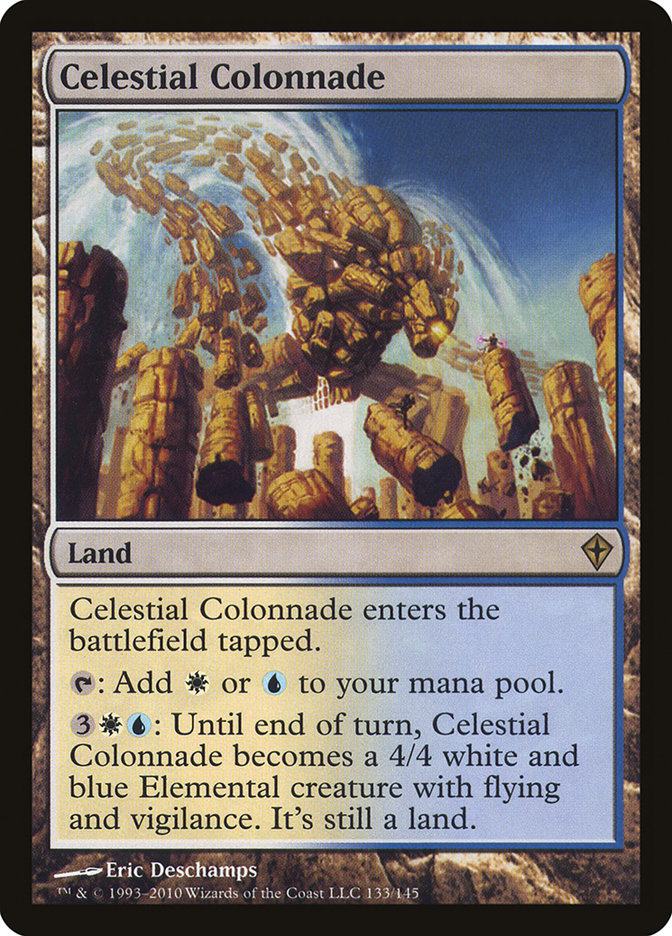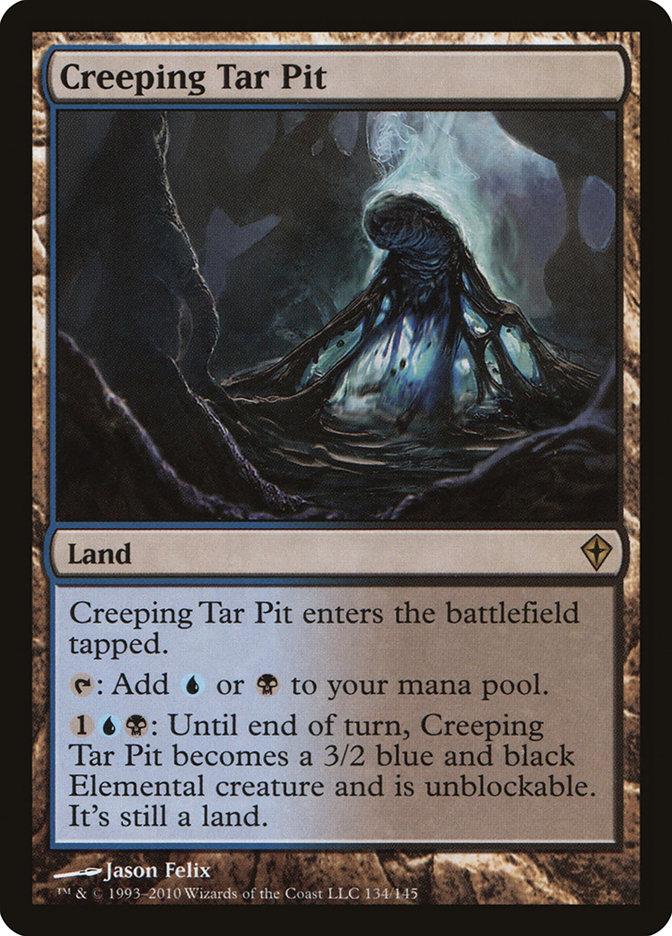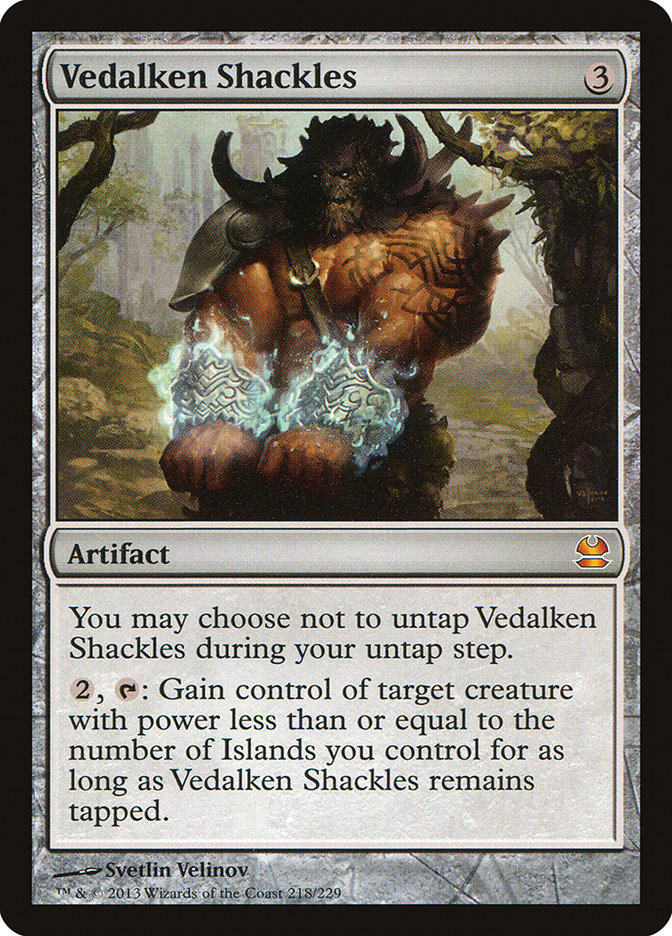Grand Prix Minneapolis sets the stage for the Modern season, with PTQs starting in June leading up to Grand Prix Boston-Worcester at the end of July.
What has changed from the Pro Tour and Richmond? What can we expect moving forward from this point, knowing Modern is a format that is quick to evolve once
metagames are set?
Interesting Grinder Decks
Creatures (2)
Lands (25)
Spells (33)

After the Pro Tour, I mentioned one of the next steps in early Modern to beat Affinity and Twin was towards Gifts Ungiven decks. These decks waned with the
rise in Deathrite Shaman, but they are great at putting down the decks that are soft to Elesh Norn, Grand Cenobite. There was a four-color list that had
some success during the Deathrite Shaman era, but before that card the g- to Gifts list was the U/W Tron deck that Luis Scott-Vargas made Top 8 with at Grand Prix
Lincoln back in early 2012.
For the record, this deck was chased out of the metagame before the printing of Deathrite Shaman by G/R Tron, so heads-up on that issue if you try to play
it now.
Creatures (3)
Planeswalkers (2)
Lands (26)
Spells (29)

Creatures (3)
Planeswalkers (2)
Lands (26)
Spells (29)
- 4 Lightning Bolt
- 3 Mana Leak
- 2 Terminate
- 2 Remand
- 3 Electrolyze
- 2 Spell Snare
- 1 Damnation
- 1 Slaughter Pact
- 4 Cryptic Command
- 2 Thoughtseize
- 3 Cruel Ultimatum
- 1 Inquisition of Kozilek
- 1 Anger of the Gods
Sideboard

Creatures (5)
Planeswalkers (3)
Lands (24)
Spells (28)

Count them. That’s three Grixis Control decks that won Trials. The first two are near-identical Cruel Ultimatum-based lists, while the last is
closer in form the UWR Control decks we have seen for ages.
The first thing worth talking about: lands. Notice that despite having more lands (26 versus 24), the Cruel Ultimatum lists actually have fewer man-lands.
Also notice that the non-Cruel Ultimatum version plays fewer lands than Shaun McClaren’s comparable UWR deck (26 versus 24 again).
Why?
Wait, that’s not the whole story.
There we go.
As we saw in Shaun McClaren’s Pro Tour Born of the Gods victory, Celestial Colonnade is a legitimate win condition. In my experience, Creeping Tar Pit and
Lavaclaw Reaches are good but unreliable.
Lightning Bolt is the tiebreaker here. As with all other creatures in Modern, how they trade with Lightning Bolt is a huge factor in their playability.
Celestial Colonnade gets a two-for-one on Lightning Bolt on top of the fact that you are trading land for spells. Creeping Tar Pit and Lavaclaw Reaches
still have this land-for-spell bonus, but you are trading your card and four mana to activate for their card and one mana. Not an ideal trade.
There’s also a bit of incentive with Celestial Colonnade being able to race the opposition. While it might not seem like much, the extra point of power
adds up to lethal approximately a full turn ahead of the Creeping Tar Pit schedule, with the “approximately” being due to Lightning Bolt, fetch lands, and
shock lands making the math a little fuzzy.
So let’s look at these Cruel Ultimatum lists. You don’t really have other targets to draw their Lightning Bolts. Sure, you have a couple of Snapcaster
Mages, but those are bad targets for Bolt as that ensures a two-for-one. You need your seventh land to come into play untapped to cast Cruel Ultimatum.
Once you cast Cruel Ultimatum, you are assuming that anything you do will be good enough to win a game. You only really want man-lands to pressure
Planeswalkers, and with the drop in the number of Liliana of the Veils you can expect to see, you don’t need that many.
What about comparing the non-Ultimatum list to McClaren’s deck?
We have a new card that matters here.
First off, the cost difference between Creeping Tar Pit and Celestial Colonnade means you can afford to cut lands. While Colonnade’s vigilance does mean it
costs a virtual five to activate, you do need six lands to have it enter combat, as opposed to four for Tar Pit. Tectonic Edge is a good card, but in a
world full of Twin, Pod, and Affinity (and not Jund, Tron, and Blue-White-Red), it is much farther away from a spell-land than it was pre-Deathrite ban.
Thus, in theory, you might not be incentivized to run a large number of lands to begin with. Those extra Tectonic Edge slots now can be turned into Islands
to support Vedalken Shackles, one of the most underplayed cards in the format.
A quick lesson on Vedalken Shackles: If you haven’t had the “joy” of playing against the card, it is absolutely miserable. Attack into it? They trade off
your guy, get a two-for-one, and then take the next one. Don’t attack into it? They win. The only thing is you need approximately 18 Islands in your deck
to make it work, which is the exact number this list gets to run.
Playing Liliana of the Veil also helps a lot with making Creeping Tar Pit into a better threat. While the Cruel Control list is interested in using all of
its cards to get to seven mana, this deck is capable of operating off fewer resources and can use Liliana similar to how Jund does. The important
interaction with Tar Pit is that Liliana’s +1 ability can clear away Lightning Bolts sitting in your opponent’s hand before you start attacking.
That said, I really don’t like these lists. The Cruel Ultimatum lists are basically a Scapeshift deck that doesn’t have built-in Mana Leak protection. You
are leaning very heavily on your one-for-ones to extend the game to the point where you hit seven mana, and those are typically the games Scapeshift
struggles in. Your kill card is also significantly less lethal than Scapeshift, and I can easily see a Pod opponent set up board states where Cruel
Ultimatum isn’t actually enough to win.
The other list seems better, but it suffers from the one-for-one syndrome as well. When you look at a Jund or U/W/R list it is very easy to underestimate
how much work the creatures do on this front. Obviously Dark Confidant is card advantage, but Tarmogoyf and Restoration Angel are as well. If your opponent
has a number of smaller but removal resilient creatures (read: the Pod deck), you are not going to do well trading spells for them. A larger creature,
however, can make combat unprofitable for multiple opposing creatures (virtual card advantage) or just end the game before your opponent’s engine gets
online.
This deck is leaning on Vedalken Shackles to play that part, but Abrupt Decay throws a wrench into those plans. As long as Melira is the more prominent Pod
deck it is clear to me that Restoration Angel, as a card with converted mana cost greater than three, is the better pseudo-control creature trump.
The Day One Undefeateds
1 Kiki-Pod
1 RUG Twin
1 UR Twin
1 RG Tron
1 Melira Pod
To be honest, this is almost 100% expected.
We see less combo-oriented builds of Twin and both types of Pod succeeding, which is expected given their success at Grand Prix Richmond. We see a major
drop in the presence of Affinity, which, given its success at Grand Prix Richmond, how much people hate losing to it, and the push towards Ancient
Grudge-capable Twin decks, is also expected.
The last two decks in the undefeated bracket are the big mana decks of the format: Scapeshift and Tron. These decks succeeding also makes a lot of sense.
These decks have always been the worst matchup for Melira Pod. Kiki-Pod has always been fine against them, thanks to the more explosive combo capability of
that deck, but the fact that Melira takes an extra turn or two to start doing relevant things against them means they have that much more time to land a
Karn Liberated or find their Scapeshift.
They bash the random midrange decks people are drawn to. Scapeshift in particular benefited from no longer having to see a Turn 2 Liliana of the Veil, as
it really can’t beat that card, and now always will have Remand or Izzet Charm mana up to face it. Tron similarly is better off now that Fulminator Mage
can’t hit early.
People are skimping on hate for these decks. They didn’t put up amazing numbers at Richmond, and Tron especially requires very specific hate (Sowing Salt).
People were likely hedging that a couple of Tectonic Edges and generic interaction would handle Scapeshift when it wasn’t enough to solidly beat it or even
touch Tron.
The other combo decks made themselves slower. Storm and Ad Nauseam are both fading fast and Twin is down to around eleven combo pieces, if not fewer. Tron
again gets more of a window to Karn or Oblivion Stone someone, while Scapeshift no longer is punished for playing two-mana interaction to the full set of
Swan Songs that All-In Twin can represent.
The one matchup these decks were reliably scared of was Affinity. It is almost as fast as the most aggressive combo decks, much more resilient to generic
disruption like Thoughtseize and Mana Leak, and is very capable of fielding its own disruption, all of which are terrible for Shift and Tron. As mentioned
above, that deck is in the low part of its typical popularity cycle and big mana decks were able to capitalize.
If there’s a reason to not move to Gifts Ungiven Tron decks, this is it.
The Top 16
1 WUR Twin
2 RUG Twin
2 WUR Control
2 Jund
5 Melira Pod
2 Kiki Pod
1 Affinity
This is a pretty accurate snapshot of top tier Modern right now. Nothing shocking, just the best of the best. The only deck that wasn’t really represented
at Grand Prix Richmond was U/W/R Control, which I only assume decided to take the weekend off there because it had just won the Pro Tour or something.
One thing I would like to note is that I think Blue-White-Red Twin is very well-positioned here. If you want something that actually beats both variant of
Pod, this is it. In fact, midrange Twin in general is fairly positive there, as you pinch them between a beatdown plan to manage their long game Podding
life total, a combo plan to race their attempts to aggressively go off, and removal to make them jump through just a few more hoops. I don’t know if this
is where I would start for the upcoming season, but if I were hellbent on having the best Pod matchup it certainly is the best choice.
Traditional U/W/R’s success, I think, has a lot to with catching Pod off guard. Pod can smash Blue-White-Red if it wants to, as evidenced by my Grand Prix Kansas City list starting me off at that event with an
easy three wins in the matchup.
Now compare that list to the list my friend Matt McCullough (not to be confused with the other Matt McCullough who Top 8’ed the Open in Cincinnati two
weekends ago or the other Matt McCullough who lives in the Midwest) Top 16’ed Grand Prix Minneapolis with:
Creatures (32)
- 4 Birds of Paradise
- 2 Kiki-Jiki, Mirror Breaker
- 1 Eternal Witness
- 2 Wall of Roots
- 1 Kataki, War's Wage
- 2 Kitchen Finks
- 1 Murderous Redcap
- 1 Glen Elendra Archmage
- 4 Noble Hierarch
- 1 Qasali Pridemage
- 1 Linvala, Keeper of Silence
- 1 Wall of Omens
- 1 Spellskite
- 2 Deceiver Exarch
- 2 Scavenging Ooze
- 1 Phantasmal Image
- 2 Restoration Angel
- 1 Zealous Conscripts
- 2 Voice of Resurgence
Lands (22)
Spells (6)

[Note: The Wizards Web site lists only fourteen sideboard cards for this deck. – Editor]
Zero Domri Rade (a long game threat), two Chord of Calling (a clunky spell). Fewer Kitchen Finks, fewer Restoration Angels, more silver bullets that die to
Electrolyze (Kataki), and more Walls that don’t pressure them.
The control versus combo paradigm is flipped here. If Pod knows it has to beat Sphinx’s Revelation decks, it will. If it doesn’t, it won’t put in the
effort.
One last note about the result: Jund losing to Scapeshift is a shocker to me. It looks like Game 1 Jund did nothing, while Game 3 Scapeshift hit the small
percentage out in the end. While Jund should never beat Tron, Scapeshift is extremely soft to the attrition game Jund presents. In particular, Liliana of
the Veil is a disaster if you are trying to hit seven lands.
Moving Forward
In my mind, the following game plans are clearly viable moving forward in this format.
– Play a Pod deck until they stop letting you.
– Swap Twin variants every week, a la Patrick Dickmann.
– Play Affinity every time people stop respecting it.
– Play Tron every time people start midranging too hard.
– Play Jund every time people start Twinning too hard.
That is not to say these are the only viable decks. I can see Faeries subbing in for the Jund slot to take advantage of specific metagames, Burn being
viable if mana bases get a little too painful, or even some weird Conley Woods-style Prison deck taking down a week where people become too obvious.
My best advice to those trying to crack the Modern PTQ season: We have seen all these decks before. Despite the banning or five that have occurred, this is
still virtually the same format as last year and the year before that at this point.
If the format was temporarily cracked in the past by a deck, the same circumstances could easily line up again.







